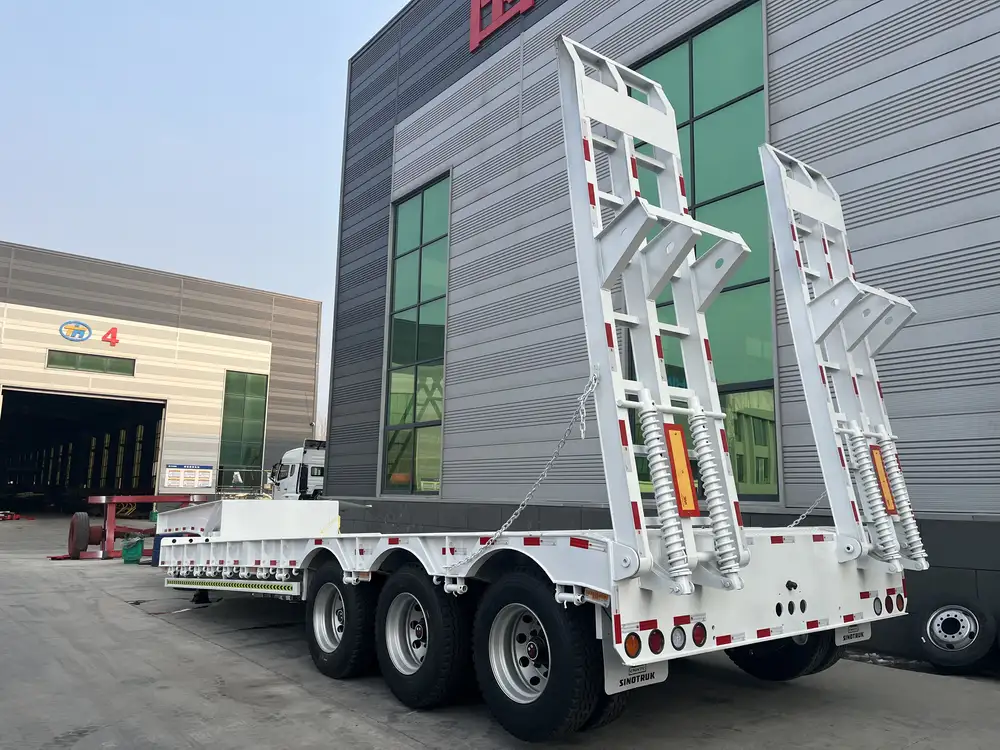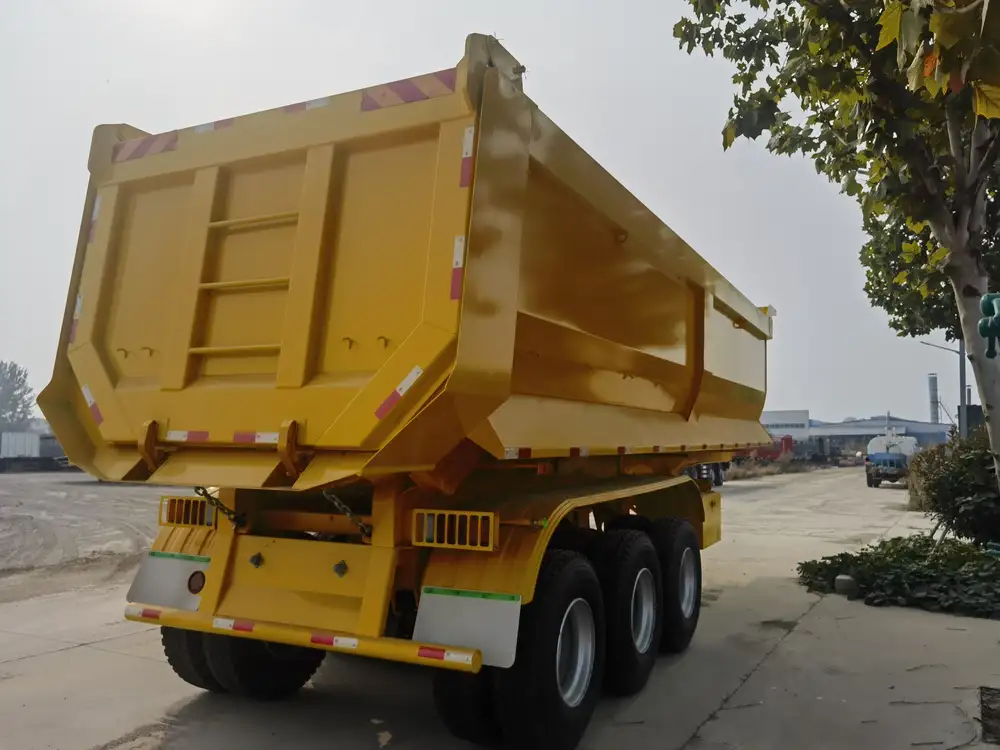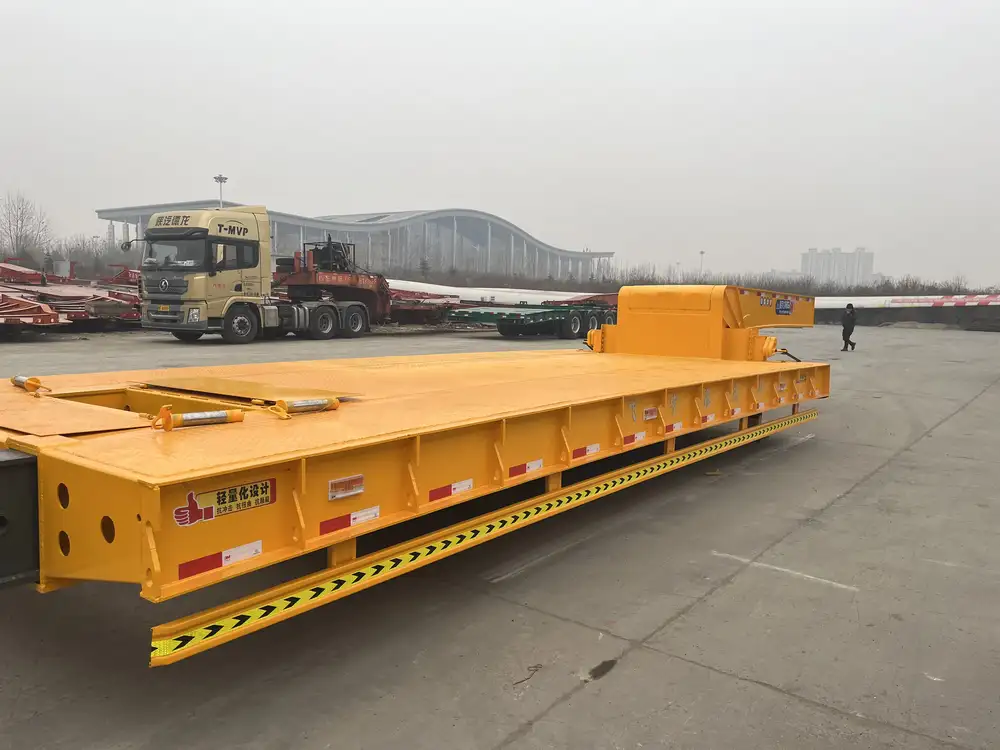Flatbed trailers represent one of the most versatile types of trailers available in the trucking industry. Their simplistic design coupled with immense loading capacity makes them indispensable for transporting various goods, from machinery to raw materials. A critical component that influences the functionality and stability of these trailers is the front axle. This article delves into the intricacies of flatbed trailers, specifically focusing on what a flatbed trailer up the front axle entails and its implications for load distribution, towing capabilities, and manufacturer considerations.
What is a Flatbed Trailer?
Flatbed trailers are characterized by their level platform without sides or a roof. This design allows for ease of loading and unloading, making them suitable for a diverse range of applications. Common uses include the transportation of:
- Construction equipment
- Large machinery
- Pallets of goods
- Building materials
The flat design minimizes loading times and simplifies the process for vehicles and forklifts, contributing to higher operational efficiency.
The Role of the Front Axle in Flatbed Trailers

Structural Importance
The front axle acts as a primary support system for flatbed trailers. It’s essential for distributing the weight of the cargo evenly across the trailer to maintain stability and safety during transit. Poor weight distribution can lead to several issues including:
- Premature wear and tear on tires
- Difficulty in braking
- Increased risk of accidents
Technical Specifications
Understanding the specifications of front axles can help manufacturers and users ensure their selected trailer meets operational demands. Here are some important specifications typically considered:
| Specification | Description |
|---|---|
| Axle Type | Standard or heavy-duty |
| Load Capacity | Varies from 5,000 lbs to 30,000 lbs |
| Axle Width | Commonly ranges from 96” to 102” |
| Materials Used | Steel or aluminum alloy |
| Suspension Type | Leaf spring or air ride |
Choosing the appropriate axle type based on the weight and type of cargo is vital for optimizing performance.
Impact of Axle Placement
The placement of the front axle on a flatbed trailer is another critical aspect that merits detailed exploration. The axle position can significantly influence towing dynamics, weight distribution, and handling characteristics.

Forward Placement vs. Rearward Placement
Forward Placement
- Enhanced Maneuverability: The closer the axle is to the front, the more responsive the trailer will be when turning. This can be particularly beneficial for urban deliveries where tight turns are regularly encountered.
- Weight Distribution Advantage: Forward axle placement helps in stabilizing cargo loads which are front-heavy.
Rearward Placement
- Improved Stability: A rearward axle placement can enhance the stability of the trailer when towing heavier loads, especially during high-speed travel.
- Diminished Tongue Weight: This positioning can reduce strain on the towing vehicle, potentially improving gas mileage.

Load Distribution Considerations
When utilizing flatbed trailers, load distribution is paramount. Uneven distribution can cause several operational problems:
- Tire Overload: Excessive weight on one side may lead to tire blowouts.
- Increased Stopping Distance: An imbalanced load can impair braking efficiency, increasing stopping distance substantially.
To mitigate these issues, it’s crucial to adhere to weight limits specified by trailer manufacturers and follow safety guidelines.
Understanding Trailer Rating Systems
The efficiency and safety of a flatbed trailer are often encapsulated in its ratings. These ratings include Gross Vehicle Weight Rating (GVWR), which indicates the maximum permissible weight of the trailer, including its own weight plus payload.
- Maximum Capacity: Exceeding the GVWR can lead to structural failures or increased wear and tear on components like axles and tires.
- Safety Compliance: It’s imperative that manufacturers construct trailers adhering to the standards set by governing bodies, such as the Department of Transportation (DOT).
Manufacturer Considerations for Flatbed Trailers

Material Selection
Selecting the right material for the construction of flatbed trailers is crucial to ensure durability and reliability.
- Steel: Known for its strength and resistance to wear, steel is a common choice. However, its added weight can impact fuel efficiency.
- Aluminum: While typically less robust than steel, aluminum offers greater corrosion resistance and is substantially lighter, improving overall fuel efficiency.
Design Features
Aesthetic design is essential but should complement functional features. Considerations include:
- Tie-Down Points: Adequate and strategically placed points ensure that cargo can be properly secured, minimizing movement during transit.
- Ramps and Extensions: Including ramps can facilitate the loading of heavy machinery, while extensions provide greater flexibility for varied payloads.
Advancements in Flatbed Trailer Technology
The evolution of technology in trailer manufacturing has led to innovative designs that significantly enhance the functionality of flatbed trailers.

Smart Axle Technology
Modern flatbed trailers may incorporate smart axle technologies that provide users with real-time data about load distribution and tire pressure. This data can be instrumental in:
- Preventive Maintenance: Identifying potential issues before they lead to trailer malfunctions.
- Optimizing Load Out: Ensuring that cargo is evenly distributed, reducing wear on mechanical components and enhancing safety.
Advanced Suspension Systems
The integration of advanced suspension systems allows for better shock absorption and stability during travel. Air-ride suspension, for instance, is known for providing smoother rides, thus minimizing the wear on both trailers and cargo.
Regulatory Compliance and Safety Measures
Adhering to regulations is critical for flatbed trailer manufacturers and operators. Compliance ensures that the trailer is safe for use on public roads, ultimately protecting both the driver and the cargo.

Federal Regulations
In many countries, flatbed trailers must meet federal regulations concerning:
- Braking System Specifications: Ensuring the stopping mechanisms are reliable.
- Lighting Requirements: Appropriate signaling and illumination for night time visibility.
Safety Protocols
Implementing safety protocols can further mitigate risks associated with trailer transport. These may include:
- Regular inspections of the trailer’s unity to ensure all components are functioning correctly.
- Training for operators about safe loading practices and trailer handling.
Conclusion: Maximizing Efficiency in Flatbed Trailer Operations
For manufacturers and operators of flatbed trailers, understanding the nuances of front axle positioning and its influence on performance is paramount. A focus on structural integrity, load distribution, and adherence to safety regulations enhances operational efficiency and safety.
In essence, the proper management of flatbed trailer specifications significantly contributes to achieving optimal performance and meeting user demands. As the industry continues to evolve with new technologies and methodologies, staying informed and compliant will be crucial for all stakeholders involved in flatbed trailer operations.



